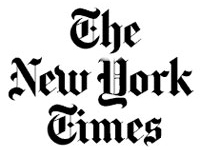
By: Sonia Kolesnikov-Jessop
SINGAPORE — For three years the South Korean artist Kwang-Young Chun has been buying discarded Korean books and storing them in air-conditioned warehouses. He has accumulated more than 20,000, spending, he said with a laugh, “a small fortune in the process.” He doesn’t buy the books for content but for the handmade mulberry paper they are printed on. These small pieces of paper, sometimes 100 years old, have been the cornerstone of his art for the last 20 years.
“I noticed some trendy restaurants and coffee shops in Seoul were decorating their walls with old mulberry paper, and I started to panic that one day I wouldn’t be able to find those books anymore,” he said in an interview here, where he recently completed a printmaking project at the Singapore Tyler Print Institute.
Handmade mulberry paper was once found in every corner of a traditional Korean home, used to cover walls, doors and even windowpanes, or to dress up utensils and decorative objects. Mr. Chun closely associates it with his childhood in a small village, he said. There he would watch his uncle, a doctor, hand patients small bundles of medicinal herbs wrapped in mulberry paper inscribed with wishes for good health.
“I can still remember all these bundles hanging in tight clusters from the ceiling of his house,” he said.
Mr. Chun, 62, has devoted two decades to his “Aggregation” series. He uses old mulberry paper to wrap thousands of thick plastic-foam triangles and ties them with twisted mulberry paper “threads.” He then glues the pieces onto panels or strings them together into free-standing installations. Art critics have described the work as having “a surface alive and bristling” and called it “a kind of painting that is not really a painting.”
Irene Lee, the print institute’s director, said : “His flatter works look like trompe l’oeil, as they create the illusion of depth. It’s a little like bas-relief in the contemporary manner. This is what makes his work so very different. The works can look like craters when seen close up, or like the Milky Way when viewed from a distance.”
Wrapping and assembling are integral parts of Korean culture. Bojagi, or square wrapping cloths, date to the 14th century and are used for carrying and storing objects. But the quiet abstraction and modernity of Mr. Chun’s work also reflects his contact with Western culture. Beginning in the late 1960’s he spent more than 10 years in the United States, first as an art student and then as a Color Field painter in Philadelphia. His work at the time was characterized by large, flat areas of color, on which he would layer variations of a hue.
“I’d worked in a factory making high-quality print fabrics when I was a young student,” he said. “It was all very colorful, and I was certainly influenced by the mix of oils and chemicals.”
He returned to South Korea with his wife in 1977. “I wasn’t satisfied with my work, and I wasn’t sure what I was going to do next,” he recalled. He spent time traveling through rural Korea, visiting folk museums and heritage centers.
“I started to understand better where I came from,” he said, “and that’s when I started using mulberry paper.”
Using old paper that has been touched by several generations, he said, adds spiritual meaning to his work. “I can’t use new paper,” he said. “For me the old paper has a life, a history. It contains the soul of the people who touched it. In a way I’m wrapping the stories of people’s lives.”
Mr. Chun, whose larger sculptures have sold for as much as $180,000, worked on a series of cast-paper sculptures and etchings during his three-week residency at the print institute here. The master papermaker, Richard Hungerford, called it one of the “most complicated projects” the institute had undertaken.
“There were a lot of steps involving plaster blocks and rubber molds,” he said. “There were certain things we had to avoid, like upward-pointed triangles, because casting paper on those is technically very difficult. Still, you can’t set up parameters with artists. It’s give and take.”
Mr. Chun said he enjoyed the printmaking, but found it less “exciting” than working with traditional paper. “For me what is important is not the final aesthetic result,” he said, “but the intangible aspect of the work.”